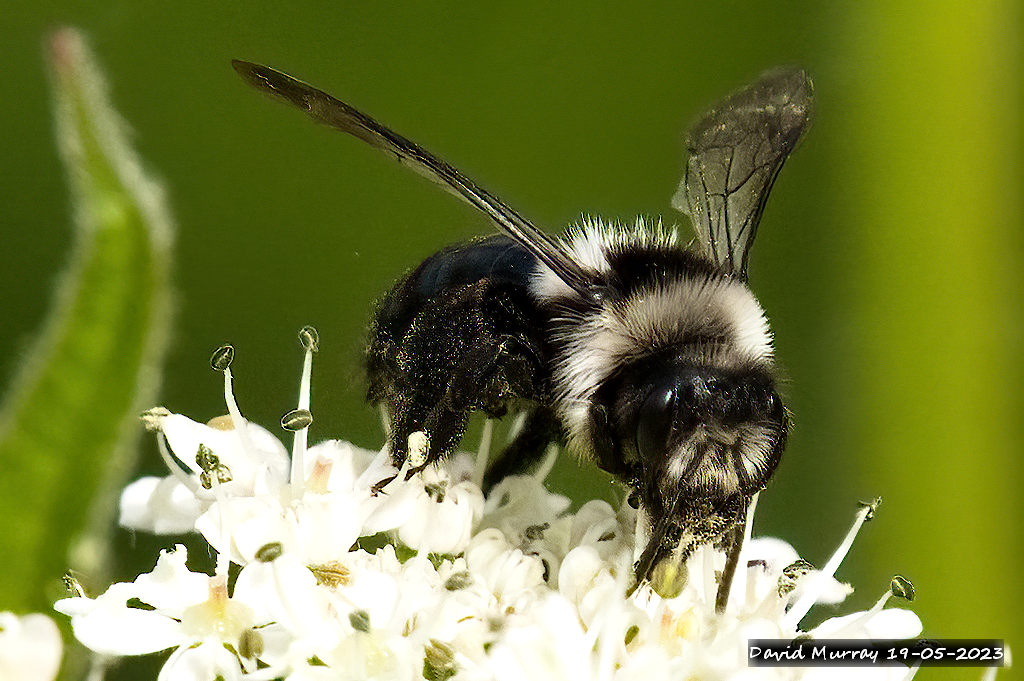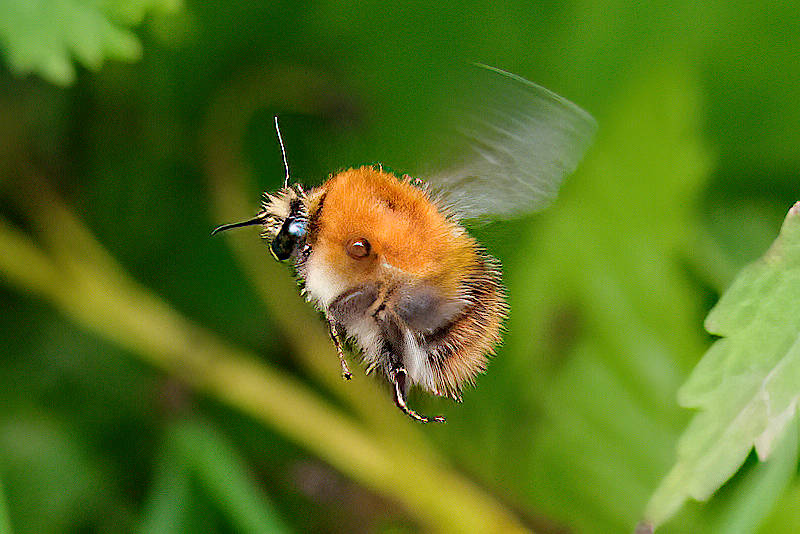Why bees? In the past few weeks I’ve been seeing fewer birds at my usual walking places. Apart from the swans, geese and Mallards almost all of the water birds have gone off to breed somewhere else. The smaller perching birds in the bushes and trees are largely hidden behind leaves and don’t need to venture out into the open so much to hunt for food now that it is in plentiful supply.
So I’ve been photographing insects once again, and this week have seen quite a variety of bees. It was only last year that I started photographing bees, and didn’t get very many so this year decided to start fairly early. Apparently in the North of England May is a reasonable time to start looking for them.
It should not be difficult to find a variety. There are over 270 different species of bee in Britain and Ireland. Globally there are more than 20,000 and those are just the ones that have been found; the full number is thought to be considerably higher. Anyway, let’s look at the three I saw in the past day or two, and credit must be given to the Facebook group, UK Bees, Wasps and Ants for the great help its members have given me in identifying the species and learning more..
Bombus pascuorum – Common Carder Bee

According to my bees field guide (a birthday gift last year) this is the commonest of British carder bumblebees. As I write this I still have to learn what a “carder” bee is. One of the others is a “miner”, and that’s fairly intelligible but what is a carder? There’s more reading to be done! I’m told that this is probably a new queen. The way the black and white parts spread out as the bee alights on the flower gives it an interesting unusual shape.
During an afternoon at Longlands Lake near Cleator, West Cumbria, I was trying out my Sigma 105mm macro lens on the Nikon D600 camera body for the first time. The bee was constantly moving from flower to flower and it wasn’t easy to get it lined up and in focus then click the shutter before it was off again to another one. The header photo of this post is of the same bee and the flight shot, although it has turned out very crisp and clear, was something of an accident when it suddenly took off as I was about to take the photo.
Andrena haemorrhoa – Orange-tailed Mining Bee

I have to say that I don’t find this bee as attractive in appearance as the previous one, but apparently the Orange-tailed Mining Bee (also called the Early Mining Bee) is found in many areas of Great Britain and is an important pollinator. This one is a female and was flitting from flower to flower alongside the cycle path at Siddick Pond, Workington.
Andrena cineraria – Ashy Mining Bee

Here’s a bee that, unlike the previous one, I do find quite attractive. It’s also known as the Grey-haired Mining Bee and is another from by the Siddick Pond cycle path. I’m rather pleased to have seen it. According to my field guide Andrena cineraria is not found in West Cumbria although it is a little further east, and south around the Morecambe Bay area.
I’ve therefore been encouraged to report it as this could be an indication of the spread of the species further north. Assuming that this information is correct it’s nice to be able to contribute to “citizen science”. Nowadays much scientific analysis of the natural world relies on ordinary people reporting what they see, and photographs help avoid what otherwise might be ill-informed guesswork.
In some part of the country Andrena cineraria is an important pollinator of the Rape crop. The number of yellow fields seems to be increasing around here. I wonder whether the bee has followed the plant – just my speculation with no scientific basis.
Bees, bees and more bees
In the past few days, while doing other photography I’ve seen what seemed to be several more bee species but have not managed to get photographs. It seems that this could become an interesting branch off my mainstream interest in birds. With butterflies and other insects as well there’s no shortage interest in the eternal Father’s world.


